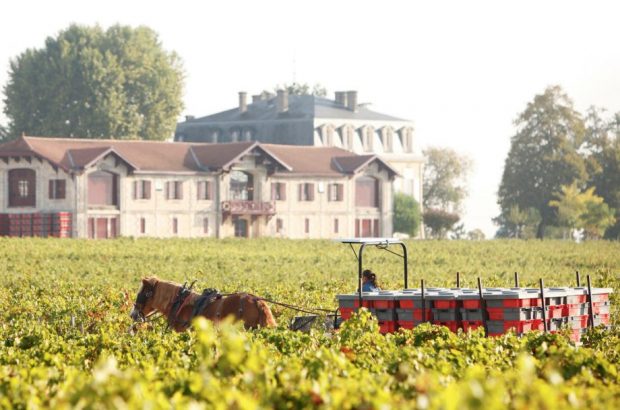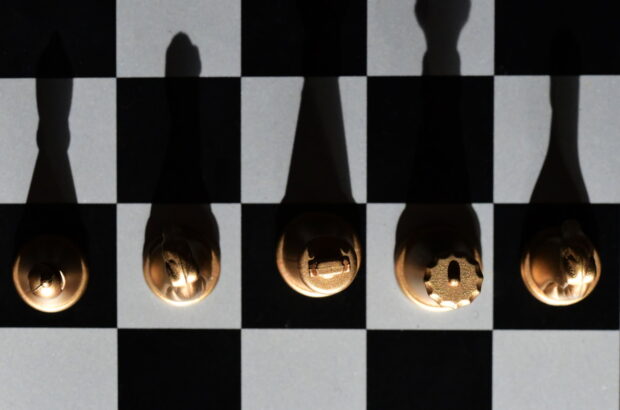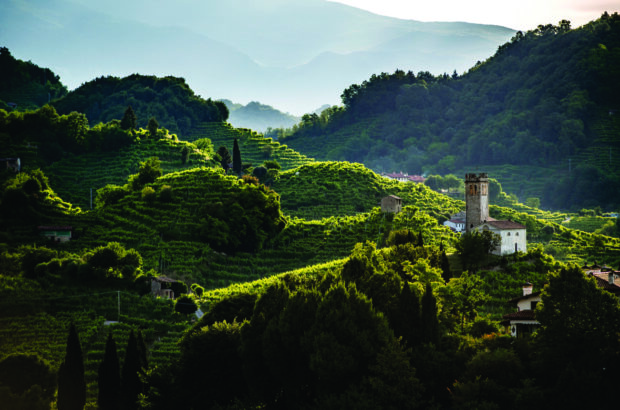Scroll down to see the wines...
For this report on the best Champagne brands to buy, I tasted approximately 150 Champagnes both in the region and from samples sent in. My final selection of 102 includes 72 latest-release vintage Champagnes, spanning the years 1999 to 2015, plus 30 non-vintage Champagnes which represent the best that the region has to offer.
{"content":"PC9wPgo8cD48ZGl2IGNsYXNzPSJhZC1jb250YWluZXIgYWQtY29udGFpbmVyLS1tb2JpbGUiPjxkaXYgaWQ9InBvc3QtaW5saW5lLTEiIGNsYXNzPSJpcGMtYWR2ZXJ0Ij48L2Rpdj48L2Rpdj48L3A+CjxoMz5UaGUgQ2hhbXBhZ25lIHJlZ2lvbjwvaDM+CjxwPjxhIGhyZWY9Imh0dHBzOi8vd3d3LmRlY2FudGVyLmNvbS93aW5lL3dpbmUtcmVnaW9ucy9jaGFtcGFnbmUvIiB0YXJnZXQ9Il9ibGFuayIgcmVsPSJub29wZW5lciBub3JlZmVycmVyIj5DaGFtcGFnbmU8L2E+IGlzIHNvIHdlbGwga25vd24gYXMgYSBzeW1ib2wgb2YgY2VsZWJyYXRpb24gdGhhdCB3ZSBjYW4gZm9yZ2V0IHRoYXQgaXQgaXMsIGFib3ZlIGFsbCwgYSB3aW5lIHByb2R1Y2VkIHVuZGVyIHNwZWNpYWwgY29uZGl0aW9ucyAmIzgyMTE7IGEgdW5pcXVlIHdpbmUsIHJpY2ggaW4gZGl2ZXJzaXR5IGFuZCBzaW5ndWxhcml0eS4gVGhlIHJlZ2lvbiBvZiBDaGFtcGFnbmUgYW5kIGl0cyB0aHJlZSBtYWluIHRvd25zLCBSZWltcywgRXBlcm5heSBhbmQgQcO\/LCBhcmUgc2l0dWF0ZWQgYXQgdGhlIGNyb3Nzcm9hZHMgb2YgdHdvIGltcG9ydGFudCBvbGQgdHJhZGUgcm91dGVzLiBUaGlzIGhlbHBlZCBDaGFtcGFnbmUgdG8gYmVjb21lIGtub3duIGluIGFsbCB0aGUgbWFqb3IgRXVyb3BlYW4gbWFya2V0cyBhbmQgdG8gYWNxdWlyZSBpdHMgbG9uZy1oZWxkIHJlcHV0YXRpb24uPC9wPgo8cD5Mb2NhdGVkIGluIHRoZSBub3J0aC1lYXN0IG9mIEZyYW5jZSwgMzAgbWlsZXMgZWFzdCBvZiBQYXJpcywgdGhlIHJlZ2lvbiBpcyBkaXZpZGVkIGludG8gdmFyaW91cyBzZWN0b3JzIGV4dGVuZGluZyBvdmVyIGZpdmUgRnJlbmNoIGRlcGFydG1lbnRzLCBmb3JtaW5nIGEgdGhpbiByaWJib24gYSBmZXcgaHVuZHJlZCBtZXRyZXMgd2lkZS4gVGhlIGxhcmdlc3QgcGFydCwgbmVhcmx5IDY2JSBvZiB0aGUgcmVnaW9uLCBpcyBsb2NhdGVkIGluIHRoZSBNYXJuZSBkZXBhcnRtZW50LiBUbyB0aGUgd2VzdCwgdG93YXJkcyBQYXJpcywgdGhlIGRlcGFydG1lbnRzIG9mIEFpc25lIGFuZCBTZWluZS1ldC1NYXJuZSBhY2NvdW50IGZvciBhbm90aGVyIDEwJS4gVG8gdGhlIHNvdXRoLCB0aGUgcmVtYWluaW5nIDI0JSBpcyBzcHJlYWQgb3ZlciB0aGUgZGVwYXJ0bWVudHMgb2YgQXViZSBhbmQgSGF1dGUtTWFybmUuPC9wPgo8aDMgc3R5bGU9InRleHQtYWxpZ246IGNlbnRlciI+PHN0cm9uZz5RdWljayBsaW5rOjwvc3Ryb25nPsKgPGEgaHJlZj0iaHR0cHM6Ly93d3cuZGVjYW50ZXIuY29tL3dpbmUtcmV2aWV3cy9zZWFyY2gjZmlsdGVyJTVCcmVnaW9uJTVEPTc4JmFtcDtmaWx0ZXIlNUJ0YXN0aW5nX2RhdGUlNUQlNUJmcm9tJTVEPTIwMTktMTEtNCUyMDAwOjAwOjAwJmFtcDtmaWx0ZXIlNUJ0YXN0aW5nX2RhdGUlNUQlNUJ0byU1RD0yMDE5LTExLTA0JTIwMDA6MDA6MDAmYW1wO29yZGVyJTVCc2NvcmVfcm91bmRlZCU1RD1kZXNjJmFtcDtvcmRlciU1QnVwZGF0ZWRfYXQlNUQ9ZGVzYyZhbXA7cGFnZT0xIiB0YXJnZXQ9Il9ibGFuayIgcmVsPSJub29wZW5lciBub3JlZmVycmVyIj5TZWUgYWxsIENoYW1wYWduZSB0YXN0aW5nIG5vdGVzICZhbXA7IHNjb3JlcyBmcm9tIHRoaXMgcmVwb3J0PC9hPsKgJiM4MjExOyBpbmNsdWRlcyB2aW50YWdlIGFuZCBub24tdmludGFnZSBDaGFtcGFnbmVzPC9oMz4KPHA+VGhlIGNpcmN1bXNjcmliZWQgcmVnaW9uIGF1dGhvcmlzZWQgdG8gbGFiZWwgaXRzIHdpbmVzIGFzIENoYW1wYWduZSB3YXMgc3RyaWN0bHkgZGVmaW5lZCBieSBsYXcgaW4gMTkyNywgYWx0aG91Z2ggaXQgaGFzIGV4cGFuZGVkIG92ZXIgdGltZS4gSW4gMjAxOCwgdGhlIGFwcGVsbGF0aW9uIGV4dGVuZGVkIHRvIDMzLDg0MyBoZWN0YXJlcyBvZiB2aW5lcyAoMjIsNDY3aGEgaW4gdGhlIE1hcm5lLCA4LDAxOGhhIGluIHRoZSBBdWJlIGFuZCBIYXV0ZS1NYXJuZSwgYW5kIDMsMzU4aGEgaW4gdGhlIEFpc25lIGFuZCBTZWluZS1ldC1NYXJuZSkuIFRoaXMgMzMsODQzaGEgYXJlYSBjb21wcmlzZXMgMjgwLDAwMCBzZXBhcmF0ZSBwYXJjZWxzIG9mIHZpbmVzIG93bmVkIGJ5IDE2LDAwMCBncm93ZXJzIGFuZCAzNDAgQ2hhbXBhZ25lIGhvdXNlcy48L3A+CjxwPjxkaXYgY2xhc3M9ImFkLWNvbnRhaW5lciBhZC1jb250YWluZXItLW1vYmlsZSI+PGRpdiBpZD0icG9zdC1pbmxpbmUtMiIgY2xhc3M9ImlwYy1hZHZlcnQiPjwvZGl2PjwvZGl2PjwvcD4KPHA+Q2hhbXBhZ25lIGlzIGRpdmlkZWQgaW50byBmb3VyIG1haW4gcHJvZHVjdGlvbiBhcmVhcywgZWFjaCBvbmUgZnVydGhlciBkaXZpZGVkIGFjY29yZGluZyB0byB0aGUgZGl2ZXJzaXR5IG9mIGl0cyB0ZXJyb2lycyBhcyB3ZWxsIGFzIGJ5IHZpdGljdWx0dXJhbCBwcmFjdGljZXMgYW5kIHByZWZlcnJlZCBncmFwZSB2YXJpZXR5OjwvcD4KPHA+PHN0cm9uZz5Nb250YWduZSBkZSBSZWltczwvc3Ryb25nPjxiciAvPgpUaGlzIGlzIHBvc3NpYmx5IGFuIGV4YWdnZXJhdGVkIGRlc2NyaXB0aW9uIG9mIGEgbWFzc2lmIHRoYXQgY3VsbWluYXRlcyBhdCBhbiBhbHRpdHVkZSBvZiAzMDBtLiBUaGUgdmluZXlhcmQgYXJlYSBpcyBsb2NhdGVkIG9uIHRoZSBzbG9wZXMgb2YgdGhlIENvdGUgZGUgbOKAmUlsZSBkZSBGcmFuY2UsIGZvcm1pbmcgYW4gYXJjIHRoYXQgbGlua3MgUmVpbXMgYW5kIMOJcGVybmF5LiBJdCBpcyBob21lIHRvIHNvbWUgb2YgQ2hhbXBhZ25l4oCZcyBmaW5lc3QgUGlub3QgTm9pciB2aW5leWFyZHMsIHBsYW50ZWQgb24gdGVycm9pcnMgd2l0aCBwcmVkb21pbmFudGx5IGNoYWxreSBiZWRyb2NrIHNvaWxzLjwvcD4KPHA+PHN0cm9uZz5UaGUgVmFsbMOpZSBkZSBsYSBNYXJuZTwvc3Ryb25nPjxiciAvPgpTdHJldGNoaW5nIGZyb20gRXBlcm5heSB0byB0aGUgZGVwYXJ0bWVudCBvZiBTZWluZS1ldC1NYXJuZSBpcyB0aGlzIHZhc3QgdGVycml0b3J5IG9mIG11bHRpcGxlIHRlcnJvaXJzLCB3aGVyZSB0aGUgTWFybmUgUml2ZXIgZmxvd3MgdGhyb3VnaCBhIGxhcmdlIHZhbGxleS4gTGltZXN0b25lIGxpZXMgdW5kZXIgYSB0aGljayBsYXllciBvZiBjbGF5IGF0IGRlZXBlciBhbmQgZGVlcGVyIGxldmVscyBhcyB5b3UgaGVhZCB3ZXN0LiBQaW5vdCBNZXVuaWVyIHRocml2ZXMgaW4gdGhlc2UgZ2VvbG9naWNhbCBjb25kaXRpb25zLjwvcD4KPGRpdiBjbGFzcz0iYWQtY29udGFpbmVyIGFkLWNvbnRhaW5lci0tbW9iaWxlIj48ZGl2IGlkPSJwb3N0LWlubGluZS0zIiBjbGFzcz0iaXBjLWFkdmVydCI+PC9kaXY+PC9kaXY+CjxwPjxzdHJvbmc+Q8O0dGUgZGVzIEJsYW5jczwvc3Ryb25nPjxiciAvPgpTaXR1YXRlZCBzb3V0aCBvZiBFcGVybmF5LCBpdHMgY2hhbGt5IHNvaWxzIG1ha2UgdGhlIEPDtHRlIGRlcyBCbGFuY3MgdGhlIGJlc3QgcGxhY2UgdG8gcGxhbnQgQ2hhcmRvbm5heSwgYW5kIDk1JSBvZiB0aGUgdmluZXlhcmQgYXJlYSBpcyBwbGFudGVkIHdpdGggdGhpcyB2YXJpZXR5LjwvcD4KPHA+PHN0cm9uZz5Dw7R0ZSBkZXMgQmFyPC9zdHJvbmc+PGJyIC8+CjcwIG1pbGVzIHNvdXRoZWFzdCBvZiBFcGVybmF5LCB0aGUgQ8O0dGUgZGVzIEJhciBpcyB0aGUgcHJpbmNpcGFsIHZpbmV5YXJkIGFyZWEgb2YgdGhlIEF1YmUgZGVwYXJ0bWVudCwgbHlpbmcgb24gc3RlZXAgc2xvcGVzIHdpdGggS2ltbWVyaWRnaWFuIG1hcmwgc29pbHMuIFRoaXMgcmVnaW9uIGhhcyBsb25nIGJlZW4gb3ZlcnNoYWRvd2VkIGJ5IHRoZSB0aHJlZSBsaXN0ZWQgYWJvdmUsIGJ1dCBhIG5ldyBnZW5lcmF0aW9uIG9mIGdyb3dlcnMgaXMgcmV2ZWFsaW5nIGl0cyBwb3RlbnRpYWwgZm9yIHF1YWxpdHksIG1ha2luZyBpdCBvbmUgb2YgdGhlIG1vc3QgaW50ZXJlc3RpbmcgQ2hhbXBhZ25lIHJlZ2lvbnMgcmlnaHQgbm93LjwvcD4KPGRpdiBjbGFzcz0iYWQtY29udGFpbmVyIGFkLWNvbnRhaW5lci0tbW9iaWxlIj48ZGl2IGlkPSJwb3N0LWlubGluZS00IiBjbGFzcz0iaXBjLWFkdmVydCI+PC9kaXY+PC9kaXY+CjxwPkVhY2ggZ3JhcGUtZ3Jvd2luZyB2aWxsYWdlIGluIENoYW1wYWduZSBpcyBldmFsdWF0ZWQgYWNjb3JkaW5nIHRvIHRoZSBxdWFsaXR5IG9mIGl0cyB0ZXJyb2lyLiBFc3RhYmxpc2hlZCBpbiAxOTExLCB0aGUgw4ljaGVsbGUgZGVzIENydXMgc3lzdGVtIG1ha2VzIGl0IHBvc3NpYmxlIHRvIGZpeCBncmFwZSBwcmljZXMgdXNpbmcgYSBzY2FsZSBiYXNlZCBvbiBhIHNpbXBsZSBydWxlOiBoaWdoZXIgcHJpY2VzIGZvciBiZXR0ZXIgdGVycm9pcnMgLyB2aWxsYWdlcy4gVGhlIDE3IGJlc3QgdmlsbGFnZXMgYXJlIGNsYXNzaWZpZWQgYXMg4oCYMTAwJeKAmSBhbmQgZ3JhcGVzIGdyb3duIGhlcmUgcXVhbGlmeSBhcyDigJhncmFuZCBjcnXigJksIHdoaWxlIDQyIG1vcmUgdmlsbGFnZXMgY2xhc3NpZmllZCBiZXR3ZWVuIDkwIGFuZCA5OSUgYXJlIGNvbnNpZGVyZWQg4oCYcHJlbWllciBjcnXigJkuPC9wPgo8aDM+SG91c2Ugc3R5bGVzICZhbXA7IGEgc2Vuc2Ugb2YgcGxhY2U8L2gzPgo8cD5Gb3IgeWVhcnMsIENoYW1wYWduZSB2aXRpY3VsdHVyZSB3YXMgb3JpZW50ZWQgbW9yZSB0b3dhcmRzIGhpZ2ggcHJvZHVjdGlvbiBxdWFudGl0aWVzIHRoYW4gaGF1dGUgY291dHVyZSB2aXRpY3VsdHVyZSB3aXRoIGxvd2VyIHZvbHVtZXMuIFdpdGggZ2xvYmFsIHdhcm1pbmcgYW5kIHRoZSBlbWVyZ2VuY2Ugb2YgY3VsdCB3aW5lZ3Jvd2VycyAoU2Vsb3NzZSwgRWdseS1PdXJpZXQgYW5kIG90aGVycyksIHdpbmVtYWtpbmcgYW5kIHZpdGljdWx0dXJhbCB0ZWNobmlxdWVzIGFyZSBldm9sdmluZywgYW5kIHNpdGUtc3BlY2lmaWMgd2luZXMgYXJlIGdhaW5pbmcgYXR0ZW50aW9uLiBBIHNlbnNlIG9mIHBsYWNlIGlzIG5vdyBoaWdobGlnaHRlZCBieSBtYW55IHdpbmVncm93ZXJzIGFzIHdlbGwgYXMgYnkgYW4gaW5jcmVhc2luZyBudW1iZXIgb2YgQ2hhbXBhZ25lIGhvdXNlcywgbWFraW5nIENoYW1wYWduZSBvbmUgb2YgdGhlIG1vc3QgaW50ZXJlc3RpbmcgYW5kIGR5bmFtaWMgcmVnaW9ucyBpbiBGcmFuY2UuPC9wPgo8ZGl2IGNsYXNzPSJhZC1jb250YWluZXIgYWQtY29udGFpbmVyLS1tb2JpbGUiPjxkaXYgaWQ9InBvc3QtaW5saW5lLTUiIGNsYXNzPSJpcGMtYWR2ZXJ0Ij48L2Rpdj48L2Rpdj4KPHA+SG93ZXZlciwgaXQgaXMgdGhlIOKAmGhvdXNlIHN0eWxl4oCZIHBoaWxvc29waHkgJiM4MjExOyB0aGUgaW50ZXJwcmV0YXRpb24gb2YgdGhlIHdpbmVncm93ZXJzIG9yIGNoZWYgZGUgY2F2ZSAoY2VsbGFyIG1hbmFnZXJzKSAmIzgyMTE7IHRoYXQgaXMgdGhlIHNvdWwgb2YgQ2hhbXBhZ25lLiBBbGwgQ2hhbXBhZ25lcyBoYXZlIHRoZWlyIG93biBpZGVudGl0aWVzLCBiYXNlZCBvbiB0aGUgZGVjaXNpb25zIG1hZGUgYWJvdXQgdGhlIGJsZW5kIG9mIGdyYXBlIHZhcmlldGllcywgdGhlIGFkZGl0aW9uIG9mIHJlc2VydmUgd2luZXMsIHdoZXRoZXIgdG8gdmluaWZ5IGluIG9hayBiYXJyZWxzLCB0aGUgbGV2ZWwgb2YgZG9zYWdlLCBob3cgbG9uZyB0byBhZ2UgdGhlIHdpbmVz4oCmdGhlIGxpc3QgZ29lcyBvbi48L3A+CjxwPkNoYW1wYWduZSBob3VzZXMgdGVuZCB0byBwcm9tb3RlIHRoZWlyIHBlcnNvbmFsIHN0eWxlcyBhcyBpbnRlcnByZXRlZCBieSB0aGVpciBjaGVmIGRlIGNhdmUgdXNpbmcgYSBzZXQgZnJhbWV3b3JrIGRlcGVuZGluZyBvbiB0aGUgeWVhciwgd2hpbGUgdGhlIHNtYWxsZXItc2l6ZWQgd2luZSBncm93ZXIgd2lsbCBwcmVmZXIgdG8gcHJvZHVjZSBkaXN0aW5jdCBjdXbDqWVzIGZyb20gYSBzaW5nbGUgdGVycm9pciBvciBhIHNpbmdsZSBncmFwZSB2YXJpZXR5LiBUaGUgaW50ZXJlc3Qgb2YgQ2hhbXBhZ25lIGNvbWVzIGZyb20gdGhlc2UgbXVsdGlwbGUgcGhpbG9zb3BoaWVzLCByZXN1bHRpbmcgYXMgdGhleSBkbyBpbiB2YXJpZWQgYW5kIHNvbWV0aW1lcyBjb21wbGV0ZWx5IG9yaWdpbmFsIHdpbmVzLjwvcD4KPHA+VGhpcyBlY2xlY3RpY2lzbSBpcyByZWZsZWN0ZWQgaW4gdGhlIGRpZmZlcmVudCBzdHlsZXMgb2YgQ2hhbXBhZ25lIHRoYXQgY2FuIGJlIHByb2R1Y2VkOiBibGFuYyBkZSBibGFuY3MgYXJlIG1hZGUgZXhjbHVzaXZlbHkgZnJvbSBDaGFyZG9ubmF5LCB3aGlsZSBibGFuYyBkZSBub2lycyBhcmUgZWxhYm9yYXRlZCBmcm9tIFBpbm90IE5vaXIgYW5kL29yIFBpbm90IE1ldW5pZXIuIFJvc8OpIENoYW1wYWduZSBpcyBtYWRlIGluIG1vc3QgaW5zdGFuY2VzIGJ5IGFkZGluZyBhIHNtYWxsIHByb3BvcnRpb24gb2Ygc3RpbGwgcmVkIHdpbmUgdG8gdGhlIGJsZW5kLCBhbHRob3VnaCB0aGUgc2FpZ27DqWUgbWV0aG9kIGlzIGVtcGxveWVkIGJ5IHNvbWUgcHJvZHVjZXJzIHdobyBmYXZvdXIgYSBib2xkZXIgc3R5bGUuIFZpbnRhZ2UgY2hhbXBhZ25lIGlzIG1hZGUgZnJvbSB0aGUgaGFydmVzdCBvZiBhIHNpbmdsZSB5ZWFyLCBzb21ldGltZXMgZnJvbSBtb3JlIHRoYW4gb25lIHBsb3Qgb3IgdGVycm9pci48L3A+CjxwPkJ5IGZhciB0aGUgaGlnaGVzdCBwcm9kdWN0aW9uIHZvbHVtZSBpcyB0aGF0IG9mIG5vbi12aW50YWdlIG9yIOKAmDxhIGhyZWY9Imh0dHBzOi8vd3d3LmRlY2FudGVyLmNvbS9kZWNhbnRlci1iZXN0L2Jlc3Qtbm9uLXZpbnRhZ2UtY2hhbXBhZ25lcy1idXktNDI4NTMzLyI+TlbigJkgQ2hhbXBhZ25lPC9hPiwgZWxhYm9yYXRlZCB1c2luZyBhIHZhcmlldHkgb2YgdmludGFnZXMsIGdyYXBlcyBhbmQgdGVycm9pcnMuIE5WIGJvdHRsaW5ncyBhcmUgb2Z0ZW4gdGhlIG1vc3QgYWZmb3JkYWJsZSBvZiBhIHByb2R1Y2Vy4oCZcyBDaGFtcGFnbmVzLCBhbmQgY2FuIGJlIGFwcHJlY2lhdGVkIGFzIGFuIGFwZXJpdGlmIG9yIGV2ZW4gd2l0aCBkZXNzZXJ0cywgdGhhbmtzIHRvIGl0cyBmaW5lLCBsaXZlbHkgYWNpZGl0eS48L3A+CjxkaXYgY2xhc3M9ImJyZWFrb3V0IHBhbGV0dGUtYSBwYW5lbCBwYW5lbC1kZWZhdWx0Ij48ZGl2IGNsYXNzPSJwYW5lbC1ib2R5Ij48ZGl2IGNsYXNzPSdicmVha291dC1jb250ZW50Jz48L3A+CjxoMz5DaGFtcGFnbmUgdmludGFnZXMgdG8gbG9vayBvdXQgZm9yOjwvaDM+CjxwPldpdGggbmV3IHZpbnRhZ2UgQ2hhbXBhZ25lIHJlbGVhc2VzIGluIHRoaXMgcmVwb3J0IHNwYW5uaW5nIG5lYXJseSB0d28gZGVjYWRlcyAoMTk5OS0yMDE1IHZpbnRhZ2VzKSwgdGhlcmUgYXJlIHBsZW50eSBvZiBvcHRpb25zIGZvciBkcmlua2VycyBvdXQgdGhlcmUuPC9wPgo8cD5Mb29rIGZvciA8c3Ryb25nPjIwMDc8L3N0cm9uZz4gQ2hhbXBhZ25lcyBiYXNlZCBvbiBDaGFyZG9ubmF5LCBhbmQgcm9zw6kgZm9yIGl0cyBkZXB0aCBhbmQgZmluZSB0ZXh0dXJlLjwvcD4KPHA+PHN0cm9uZz4yMDA4PC9zdHJvbmc+IGlzIGhpZ2hseSByYXRlZCBieSBhbG1vc3QgZXZlcnlib2R5LCBjb21iaW5pbmcgY29uY2VudHJhdGVkIGZydWl0IHdpdGggYnJpbGxpYW50IGFjaWRpdHkuPC9wPgo8cD48c3Ryb25nPjIwMDk8L3N0cm9uZz4gaXMgYSBwb3dlcmZ1bCB2aW50YWdlIHRoYXQgd2lsbCBiZSBwZXJmZWN0IGZvciB3aGl0ZSBtZWF0cy48L3A+CjxwPjxzdHJvbmc+MjAxMjwvc3Ryb25nPiwgd2hpY2ggcHJvZHVjZWQgbWFnbmlmaWNlbnQgUGlub3QgTm9pciwgaXMgYSBnYXN0cm9ub21pYyB2aW50YWdlLjwvcD4KPHA+CjwvZGl2PjxkaXYgY2xhc3M9J2JyZWFrb3V0LWJ1dHRvbnMnPjxkaXYgY2xhc3M9J3Jvdyc+PC9kaXY+PC9kaXY+PC9kaXY+PC9kaXY+Cjxocj4KPGRpdiBjbGFzcz0iYnJlYWtvdXQgcGFsZXR0ZS1hIHBhbmVsIHBhbmVsLWRlZmF1bHQiPjxkaXYgY2xhc3M9InBhbmVsLWJvZHkiPjxkaXYgY2xhc3M9J2JyZWFrb3V0LWNvbnRlbnQnPjwvcD4KPGgzPllvaGFuJiM4MjE3O3MgcGljayBvZiB0aGUgYmVzdCBDaGFtcGFnbmUgYnJhbmRzOjwvaDM+CjxwPjxzdHJvbmc+QmlsbGVjYXJ0LVNhbG1vbjwvc3Ryb25nPjxiciAvPgpUaGUgQmlsbGVjYXJ0IGZhbWlseSBoYXMgbWFkZSBDaGFtcGFnbmUgaW4gTWFyZXVpbC1zdXItQcO\/IHNpbmNlIDE4MTguIFRoZSBCaWxsZWNhcnQtU2FsbW9uIHN0eWxlIGlzIG9uZSBvZiB0aGUgcHVyZXN0LCBmaW5lc3QsIGFuZCBtb3N0IGJyaWxsaWFudCBvZiB0aGUgd2hvbGUgcmVnaW9uLiBJdHMgQ2hhbXBhZ25lcyBhcmUgcGFydGljdWxhcmx5IHdlbGwgc3VpdGVkIHRvIGdhc3Ryb25vbXkuPC9wPgo8cD48c3Ryb25nPlRyeTo8L3N0cm9uZz7CoEJpbGxlY2FydC1TYWxtb24sIENsb3MgU3QtSGlsYWlyZSAyMDAyPC9wPgo8cD48c3Ryb25nPlBoaWxpcHBvbm5hdDwvc3Ryb25nPjxiciAvPgpTaW5jZSAxOTk5LCBDaGFybGVzIFBoaWxpcHBvbm5hdCwgdGhlIGdyYW5kLW5lcGhldyBvZiBmb3VuZGVyIFBpZXJyZSwgaGFzIGJlZW4gY2Fycnlpbmcgb3V0IHF1YWxpdGF0aXZlIHdvcmsgdGhhdCBtYWtlcyB0aGlzIGhvdXNlIG9uZSBvZiB0aGUgbW9zdCBpbnRlcmVzdGluZyBpbiBDaGFtcGFnbmUgdG9kYXkuPC9wPgo8cD48c3Ryb25nPlRyeTrCoDwvc3Ryb25nPlBoaWxpcHBvbm5hdCwgTGEgUmVtaXNzb25uZSAyMDA5PC9wPgo8cD48c3Ryb25nPkphY3F1ZXNzb248L3N0cm9uZz48YnIgLz4KSmFjcXVlc3NvbuKAmXMgb3JpZ2lucyBnbyBiYWNrIHRvIDE3OTguIEFmdGVyIGEgbG9uZyBkZWNsaW5lLCB0aGUgaG91c2Ugd2FzIHJlYm9ybiBpbiB0aGUgMTk3MHMgd2hlbiBpdCB3YXMgYm91Z2h0IGJ5IHRoZSBDaGlxdWV0IGZhbWlseS4gSXQgaGFzIHNpbmNlIHByb2R1Y2VkIGRpc3Rpbmd1aXNoZWQgd2luZXMgb2YgZ3JlYXQgZmluZXNzZSBhbmQgZGVwdGggb2YgY2hhcmFjdGVyLjwvcD4KPHA+PHN0cm9uZz5Ucnk6wqA8L3N0cm9uZz5KYWNxdWVzc29uLCBBdml6ZSBDaGFtcCBDYcOvbiAyMDA4PC9wPgo8cD48c3Ryb25nPk9saXZpZXIgQm9udmlsbGU8L3N0cm9uZz48YnIgLz4KU2luY2UgMTkwMCwgdGhlIEZyYW5jayBCb252aWxsZSBob3VzZSBoYXMgYmVlbiBsb2NhdGVkIGluIE9nZXIgaW4gdGhlIEPDtHRlIGRlcyBCbGFuY3Mgc2VjdG9yLiBUb2RheSwgT2xpdmllciBCb252aWxsZSBpcyBhdCB0aGUgaGVsbSBhbmQgcHJvZHVjZXMgbGl2ZWx5LCBmcmVzaCBDaGFtcGFnbmVzIHdpdGggcmVtYXJrYWJsZSBhcm9tYXRpYyBjb21wbGV4aXR5LjwvcD4KPHA+PHN0cm9uZz5Ucnk6wqA8L3N0cm9uZz5PbGl2aWVyIEJvbnZpbGxlLCBMZXMgQmVsbGVzIFZveWVzIDIwMTI8L3A+CjxwPgo8L2Rpdj48ZGl2IGNsYXNzPSdicmVha291dC1idXR0b25zJz48ZGl2IGNsYXNzPSdyb3cnPjwvZGl2PjwvZGl2PjwvZGl2PjwvZGl2Pgo8cD4K"}
Yohan’s top-rated vintage Champagnes:
94 points and above
{}
{"wineId":"22275","displayCase":"standard","paywall":true}
{"wineId":"34595","displayCase":"standard","paywall":true}
{"wineId":"28118","displayCase":"standard","paywall":true}
{"wineId":"33025","displayCase":"standard","paywall":true}
{"wineId":"33442","displayCase":"standard","paywall":true}
{"wineId":"26406","displayCase":"standard","paywall":true}
{"wineId":"34658","displayCase":"standard","paywall":true}
{"wineId":"31868","displayCase":"standard","paywall":true}
{"wineId":"21593","displayCase":"standard","paywall":true}
{"wineId":"34625","displayCase":"standard","paywall":true}
{"wineId":"29987","displayCase":"standard","paywall":true}
{"wineId":"34657","displayCase":"standard","paywall":true}
{"wineId":"33808","displayCase":"standard","paywall":true}
{"wineId":"16538","displayCase":"standard","paywall":true}
{"wineId":"34666","displayCase":"standard","paywall":true}
{"wineId":"34612","displayCase":"standard","paywall":true}
{"wineId":"34624","displayCase":"standard","paywall":true}
{"wineId":"34634","displayCase":"standard","paywall":true}
{"wineId":"34644","displayCase":"standard","paywall":true}
{"wineId":"29990","displayCase":"standard","paywall":true}
{"wineId":"29218","displayCase":"standard","paywall":true}
{"wineId":"34614","displayCase":"standard","paywall":true}
{"wineId":"34633","displayCase":"standard","paywall":true}
{"wineId":"34635","displayCase":"standard","paywall":true}
{"wineId":"34646","displayCase":"standard","paywall":true}
{"wineId":"34653","displayCase":"standard","paywall":true}
{"wineId":"34665","displayCase":"standard","paywall":true}
{}
Champagne grape varieties
In most instances, Champagne is a blend of the three key permissible grape varieties (Chardonnay, Pinot Noir and Pinot Meunier) sourced from diverse sites and from several different vintages. In the past, a number of grape varieties were planted in Champagne, but now the region focuses on just three:
Pinot Noir
The main grape variety, representing 38% of total plantings, Pinot Noir brings power and depth.
Pinot Meunier
Occupying 31% of the total vineyard area, Pinot Meunier produces round, fruity wines with balanced acidity.
Chardonnay
Accounting for 30% of total plantings, Chardonnay produces a floral, mineral style and very fine wines.
Pinot Blanc, Arbane and Petit Meslier are other varieties that are still authorised for Champagne production, but they are planted in tiny amounts.
Dosage by numbers
Doux: more than 50 g/l of residual sugar.
Demi-Sec: 32-50 g/l.
Sec or dry: 17-32 g/l.
Extra-Dry: 12-17 g/l.
Brut: 0-12 g/l.
Extra-Brut: 0-6 g/l.
Brut Nature / Non-Dosé / Brut-Zéro: No dosage, and with no more than 3g/l of residual sugar remaining from fermentation.
You may also like:












